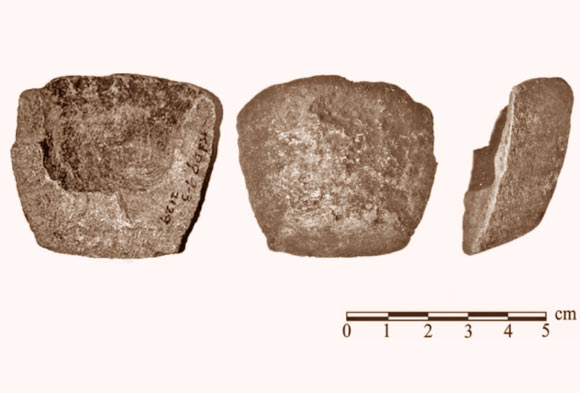Possible Viking Vessel Identified in Canada

The ancient site, called Nanook, was first discovered in the 1960s by Dr. Moreau Maxwell of Michigan State University.
Dr. Maxwell identified it as a Dorset Paleo-Eskimo site although he noted anomalies in the architectural remains, and obtained a series of radiocarbon dates ranging from 754 BC to 1367 CE.
Among the artifacts recovered by the archaeologist in association with the unusual architectural remains was a small stone vessel.
Dr. Sutherland and her colleagues from the Geological Survey of Canada-Ottawa and Peter H. Thompson Geological Consulting Ltd have now discovered that the interior of the vessel contains fragments of bronze as well as small spherules of glass.
The object, according to the scientists, is a crucible for melting bronze, likely in order to cast it into small tools or ornaments. Indigenous peoples of northern North America did not practice high-temperature metalworking.
“The object is 48 mm tall and has a straight sloping base meeting the slightly convex lateral wall at an angle of approximately 140 degrees. The base of the complete object may have been keel-shaped,” Dr. Sutherland and her co-authors described the find in a paper published in the journal Geoarchaeology.
“The artifact appears to have been roughly circular in plan, with diameter expanding from >35 mm at the base to >48 mm at the rim. The base is 15 mm thick, with the walls tapering to a thickness of 6 mm at the rim.
The exterior is smoothly finished, but portions of the interior are scarred by scratching or scraping.”
“An irregular break cuts across roughly the center of the vessel, indicating that approximately half is missing.”

According to the team, small ceramic crucibles were employed in nonferrous metalworking throughout the Viking world.
“We are aware of only one stone crucible, which was recovered from a Viking Age context in Rogaland, Norway.”
“Small crucibles with a circular plan and either flat or conical bases have been recovered from Early Mediaeval sites in the British Isles including one stone specimen from Garranes in Ireland.”
“The presence of bronze traces in the crucible from Baffin Island is notable, as brass (copper-zinc alloy) is more characteristic of finds from Scandinavia.”
Dr. Sutherland said: “the crucible adds an intriguing new element to this emerging chapter in the early history of northern Canada.”
“It may be the earliest evidence of high-temperature nonferrous metalworking in North America to the north of what is now Mexico.”





